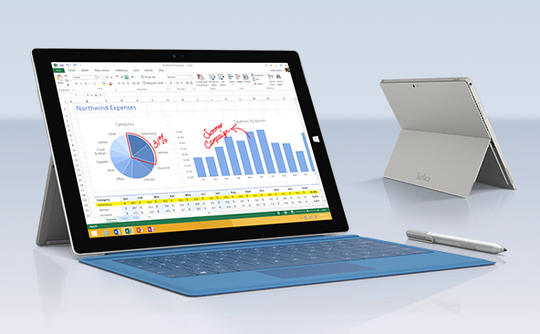TV manufacturers are still pushing hard for 4k, the ultra high-
definition screens that pack in four times the resolution of
current HD TVs. High prices (sets typically start at $2,000) and
limited amounts of 4K content have slowed adoption of the sets.
Ultra HD also only looks noticeably different on larger sets, 50-
inches and up. This year the companies have rolled out some big
names to give 4K a marketing boost. Major movie
studios are working with Amazon to stock up on 4K content, and
Comcast is working with Samsung to up its 4K streaming
offerings for people who have Samsung 4K TVs. The flat screen has been embraced as the default TV form factor.
It's sleek, it can hang on walls, it occupies a minimal amount of
space. Now manufacturers are working on a new feature to save
us from all that dull flatness: curved screens.
Television companies claim a slightly curved screen offers a better
viewing experience by reducing glare and improving visibility for
people sitting to the sides of a TV set. The effect also is supposed to be more immersive,
similar to IMAX screens. There's still no consensus about whether
or not that's true, but it's a flashy way for some companies to set
their screens apart.
Both Samsung and LG announced new curved 105-inch 4K
televisions. Samsung has an 85-inch prototype that's bendable,
meaning it can transform from flat screen to curved, and four
other curved models.
Sony is also toying with a different shape it calls the wedge. The
company announced its new 1080p television with a tapered
wedge design on the edges, meant to take up minimal space but
incorporate good front-facing speakers.
definition screens that pack in four times the resolution of
current HD TVs. High prices (sets typically start at $2,000) and
limited amounts of 4K content have slowed adoption of the sets.
Ultra HD also only looks noticeably different on larger sets, 50-
inches and up. This year the companies have rolled out some big
names to give 4K a marketing boost. Major movie
studios are working with Amazon to stock up on 4K content, and
Comcast is working with Samsung to up its 4K streaming
offerings for people who have Samsung 4K TVs. The flat screen has been embraced as the default TV form factor.
It's sleek, it can hang on walls, it occupies a minimal amount of
space. Now manufacturers are working on a new feature to save
us from all that dull flatness: curved screens.
Television companies claim a slightly curved screen offers a better
viewing experience by reducing glare and improving visibility for
people sitting to the sides of a TV set. The effect also is supposed to be more immersive,
similar to IMAX screens. There's still no consensus about whether
or not that's true, but it's a flashy way for some companies to set
their screens apart.
Both Samsung and LG announced new curved 105-inch 4K
televisions. Samsung has an 85-inch prototype that's bendable,
meaning it can transform from flat screen to curved, and four
other curved models.
Sony is also toying with a different shape it calls the wedge. The
company announced its new 1080p television with a tapered
wedge design on the edges, meant to take up minimal space but
incorporate good front-facing speakers.


































